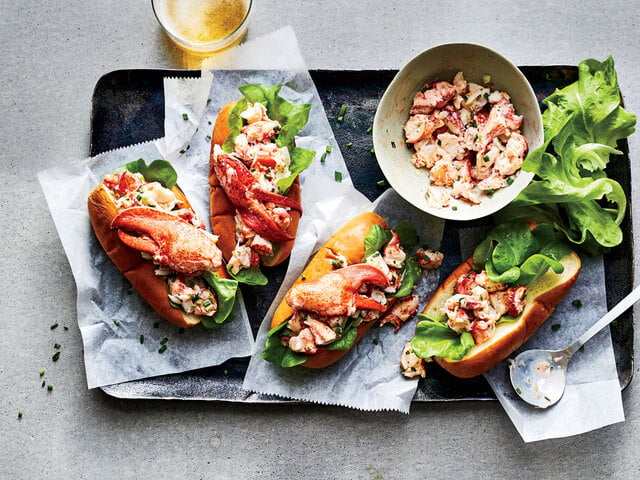Top Seafood Items for You to Enjoy

Even if you get your seafood fresh, not all seafood is the same. There are seafood items that are safe to eat, but others may not be safe at all. Some types of seafood may contain too high levels of mercury that may affect your health.
A prime example of this kind of fish include marlin, shark, orange roughy, swordfish, tilefish, and bigeye tuna. King mackerel also has high content, and because these fish eat toxic algae, you also might get ciguatera poisoning.
And then there are the seafood items that have been over-fished so much that the population of that seafood item has become dangerously low. This is true for marlin, shark, and orange roughy. The same goes for bluefin tuna, which might be great for sushi, but has been overfished almost to the point of extinction.
So, what should you order instead? If you want to be safe from mercury poisoning and don’t want to go with over-fished seafood types, then you should stick to the following types of seafood:
Tilapia
Okay, it’s true that some seafood fans aren’t exactly enamored with tilapia, because its flavor may be too mild for some. But it’s that same mild flavor that makes it a tolerable for people who might otherwise avoid seafood altogether.
Tilapia is actually among the more popular seafood options in the US, ranking 4th among all the fishes consumed in the country. It helps that there’s plenty of tilapia out there, and it’s cheap. It’s also safe to eat because it’s low in mercury. So, you might want to reconsider your snobbish attitude against tilapia.
Mahi Mahi
This is another sustainable option for you. They have large ranges, spawn frequently, and grow quickly. Its mercury content is also on the low side, and even pregnant women can enjoy up to 6 servings of mahi mahi each month.
The mahi mahi flesh is quite firm, with a pink color and a sweet taste. If you’re cooking this in your kitchen, just make sure you don’t overcook it. Remove the fish from the heat once it starts flaking. It’ll then be both flaky and yummy.
You can also enjoy this in a seafood restaurant, though it might be listed as dolphin fish or even just “dolphin”. But it’s most likely mahi mahi, which isn’t really related closely to those cute dolphins at all.
Pacific Halibut
First off, let’s distinguish the Pacific Halibut from its Atlantic counterpart. The Marine Steward Council has certified the Pacific Halibut as sustainable. Its mercury content is also low enough that it’s safe to eat 4 servings each month.
On the other hand, the Atlantic Halibut population has dipped alarmingly low to overfishing, so stay away from it.
Stick to the Pacific Halibut, and you get to enjoy its mild and somewhat sweet taste to go with its firm but delicate texture. These fish can be rather big, with some going up to 500 pounds. They’re in season from March to October, and in peak season from May to September.
It’s very easy to cook yourself, and it’s quite versatile. You can just grill it, steam it, poach it, or even bake it.
Lobster
It’s not surprising if you often pay almost $20 for the Lobster Rollwhenever you visit a Bonefish Grill restaurant. Some people seem to think that lobster is a luxury food item, so twenty bucks doesn’t seem all that much.
Lobster is actually among the most popular seafood around, even for those who generally avoid seafood. It’s fun to eat when you get a totally intact lobster and you crack the shell yourself to get to that delicately flavored meat. You don’t even have to worry about the mercury content, which is low enough according to the FDA.
Despite what you may have heard from Maine residents, these crustaceans are actually found all over the US East Coast. The lobster industry has also done a terrific job in making sure that they’re sustainable and ethically sourced.
Lobster catchers don’t harvest very large lobsters, since they’re usually fertile. They also avoid pregnant lobsters as well. They use lobster cages that catch only the bigger and older lobsters, as they’re designed to let smaller lobsters escape easily.
Scallops
Whether they’re farmed or wild, scallops are regarded as sustainable. And they’re also low in mercury. They’re better if they’re freshly caught instead of frozen, and you should go with the dry scallops. The wet scallops aren’t as easy to brown, and they taste a bit bland.
Preparing scallops is easy enough, once they’re shucked. You just need to be careful that you don’t overcook them. Just use a super-hot pan to quickly sear them, and you’re good to go.
Shrimp
Shrimp are plentiful and low in mercury, so go ahead and enjoy them. In fact, they also get you lots of protein with fewer calories. They’re easy to prepare, the flavor is mild and pleasant, and the texture is nice. What’s not to like?
Salmon
This is one of the most popular fish options in the US, for many good reasons. You get plenty of protein along with omega-3s. It has low mercury content, and even pregnant women can eat salmon safely. Actually, it’s a recommended food for pregnant women as it helps with healthy fetal growth.
It’s delicious when cooked, and it’s great when raw and you find it in sushi. It’s terrific when fresh, but it’s still fine when frozen. Its delicious flavor is also distinctly “non-fishy”, so even non-seafood fans can’t object to it!






